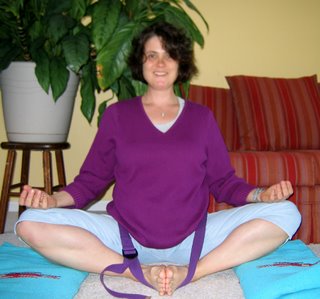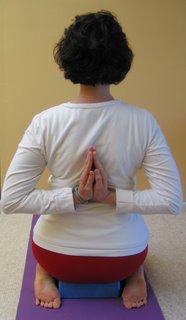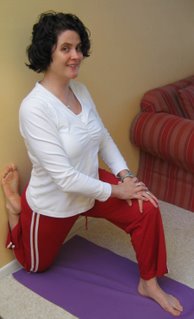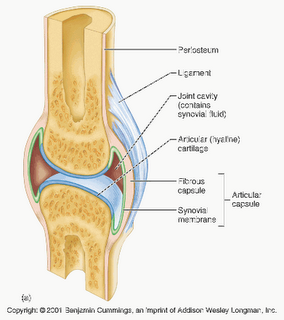A pose that fascinates me is Utthita Trikonasana or Extended Triangle. It is such an odd position, and so unnatural, that it takes a long time for the body to remember how to do it. Feet turn at odd angles to one another, thighs roll out to keep the knees lined up with the shins, the torso tips to the side while trying to twist below the ribcage, the neck twists even more to look at the sky. Beginners usually don’t like the pose, at first, because it feels so ungainly and doesn’t make much sense. However, I have had a number of students with hip issues who are amazed at how nicely the pose stretches and opens that area of the body.
There is an extremely complicated explanation for what the various muscles of the hips and thighs are doing in this pose. To massively paraphrase H. David Coulter, in Anatomy of Hatha Yoga, “it puts unusual asymmetric tensions on the hip joints and muscles of the thighs”; in other words, because you are rolling the thighs out to keep the hips even and squared and then stretching to the side, there is a high level of engagement going on around the pelvis to keep you aligned, but also to keep you from tipping over. One side of the body lengthens into a stretch, while the other side tries to support the weight of the body and keeps you cantilevered over the floor.
I think it is a “magic” pose, because it does so much for the body despite the awkward arrangement of limbs to torso. You stretch the backs of the legs, open the hips, massage the torso with the twist, open the chest and stretch the lengthened arms. As your body becomes used to the position, you can also work on your breathing—trying to keep the breath full and even as you continue to subtly twist the center and stretch the extremities.
Here’s a short sequence to get you prepped for a nice, long triangle. Challenge yourself to stay in the pose for awhile, and notice what effect it has on your body.
Triangle Sequence
Sukhasana (Seated Easy Pose)-Concentrate on lengthening the side ribs to create space in the lower half of the torso. Balance the pelvis so you are resting on the center of the sit bones, not rolling forward or back. Starting in the lower back, start twisting gently to the right, then move the twist into the rib cage then the shoulders. Hold for a few breaths and then repeat on the other side.
Dandasana with Namaste Arms (Staff Pose) Maintain the length you just established in the spine, while adding the stretch of the feet forwards and the arms behind the back in the prayer position. Keep the spine long and the pelvis balanced so the lower back doesn’t overarch or slump backwards. Stretch your elbows back and slightly down to open the chest.
Padangusthasana (Hand-to-Big Toe Pose) Concentrate on keeping the back of the hips grounded as you stretch the right foot towards the ceiling (the left foot stretches to the wall in front of you, as it did in Staff pose). Then lower the right leg to the side with the hips still evenly pressed to the floor. You are essentially in a reclined Triangle now. Open the chest, keep the pelvis level and press the souls of the feet away evenly. Repeat on the left side.
Tadasana with Hastasana (Mountain Pose with Overhead Arm Stretch) Come to standing, with the body aligned and the spine stretching up to the ceiling as the tailbone points down. Press the palms overhead, while keeping the shoulders away from the ears. Feel the stretch along the side body and the rotation in the shoulders.
Utthita Trikonasana (Extended Triangle Pose) Now, come to Triangle, emphasizing the work you’ve done in the previous poses. Feet are grounded evenly, the hips are square, the tailbone points down and the side ribs lengthen. As you start to lean to the side, begin the twist low in the back and then move it to the chest and shoulders. The arms stretch away from each other as you lower to the shin or thigh. Finally, the head turns to look at the ceiling as you keep your neck long. Keep adjusting the pose as you hold it and try to breathe deeply and evenly. Switch sides. ©Brenda K. Plakans. All Rights Reserved








